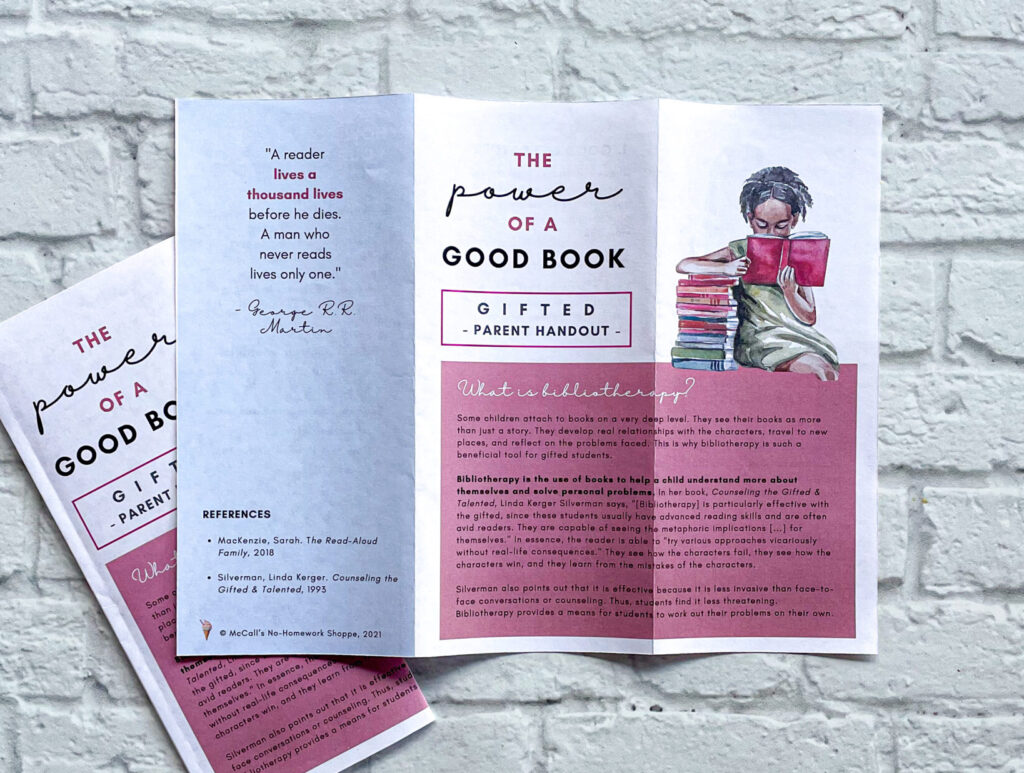As ELA teachers, we are constantly encouraging our students to read… because we know reading has so many proven benefits! It can improve writing skills, increase creativity, and expand vocabulary—but can it also support a nicer classroom?
Reading and World Peace
A while back, I came across a quote by (the amazing) Dr. Maria Montessori, and it struck me pretty hard:
If help and salvation are to come, they can only come from the children, for the children are the makers of men.
Dr. Maria Montessori
We often think of “world peace” as an idealistic, yet coveted, idea that may happen one day… a really, really, really long time from now.
But actually, world peace lies in the next generation—the very students we are teaching right now. And it’s up to us to inspire them! (Ah!) We are their coaches on global citizenship, personal responsibility, and respect for diversity.
But, uh, oof! That’s a heavy task! Last time I checked, middle school teachers only have 45 minutes to run a standards-based lesson plan… and I don’t recall “act with kindness” as a current common core ELA standard.
Well… here’s the besty best part! You don’t have to do anything different!
Just keep those kids reading great stories!
Researchers have written many (ahem, *many*) studies focusing on the relationship between fiction readers and their behavior in society. It turns out that reading fiction makes people… nicer. Go bookworms! 🪱
Fiction Readers Have More Empathy
Generally, according to one study in 2015, “Readers of fiction score higher on measures of empathy and theory of mind (ToM)—the ability to think about others’ thoughts and feelings—than non-readers” (Social Cognitive and Affective Neuroscience). And to be very specific, some studies, like this one from the Journal of Research in Personality, suggest that fiction readers perform much better socially than non-fiction readers.
In regards to children’s behaviors, some research has found that children (ages 4 and 6) who had been exposed to more fiction performed better at ToM tasks than children with less exposure (Cognitive Development) and that reading children stories that contain more emotional, social, and psychologically convincing content predicts empathy and socioemotional adjustment (Reading Psychology).
“In reading great literature I become a thousand men and yet remain myself.”
C.S. Lewis
When we read stories, we enter the main character’s mind and place ourselves into their situations. If the main character kicks a ball, the part of our brain that is associated with making us physically kick our own leg lights up. Essentially, we “mentally practice” decision making and get to experience the result, with no real harm done, of course.
Once we close the book, all of that “practice” settles in, and we carry those experiences with us in our daily life. This enables us to empathize with others more fluently in real life—we can easily slip into a friend’s point of view because we’ve done it many times before with characters on the page.
Free Resource: Bibliotherapy Parent Guide for Middle Schoolers
Free Resource: Bibliotherapy Parent Guide for Gifted Middle Schoolers

Struggling Readers Can Benefit Too
And this skill is not just for your advanced readers and those who read novels. As noted in the previously mentioned studies, even young children can reap the benefits of fiction reading! Today, there are so many wonderfully rich and colorful children’s books—from picture books to graphic novels to early readers—that allow our students (like those struggling to read) to peek into other children’s lives.
Read: Struggling middle-school reader? It’s time for them to fall in love again
Recently, I read My City Speaks by Darren Lebeuf (a picture book about how a girl with vision impairment experiences her city) with my four-year-old daughter, and she soaked it up! She had so many questions and really considered what it might be like to not be able to see.
Ways to Encourage Daily Reading
We can help develop empathy in our students too, just as Dr. Montessori proposed, by encouraging reading in our daily classroom routines and assignments. Here are just a few ideas to consider:
- Introduce First Chapter Fridays
- Watch a book trailer from YouTube once a week
- Add short stories into your lesson plans
- Start a weekly book club in class
- Make contests for pleasure reading over holiday breaks
- Visit your school’s library once a month as a class
- Cut out some class time for silent reading
- Hand out bonus points for random book checks (if a student has a book with them)
- Read a novel together as a class
- Create an afterschool or lunchtime book club
- Pull quotes from popular books and have students write about their thoughts
As ELA teachers, we must encourage, inspire, and motivate our students to read at every turn. We must show them that reading actually is fun! And with each book or story you influence your students to read, you are teaching them to be more compassionate for the human race (among a billion other amazing things that reading does for children). By making reading a habit, we will simultaneously foster empathy to be a habit.
For a deeper look at the relationship between fiction reading and social behavior, check out this BBC article: “Does reading fiction make us better people?” by Claudia Hammond.

No Comment! Be the first one.